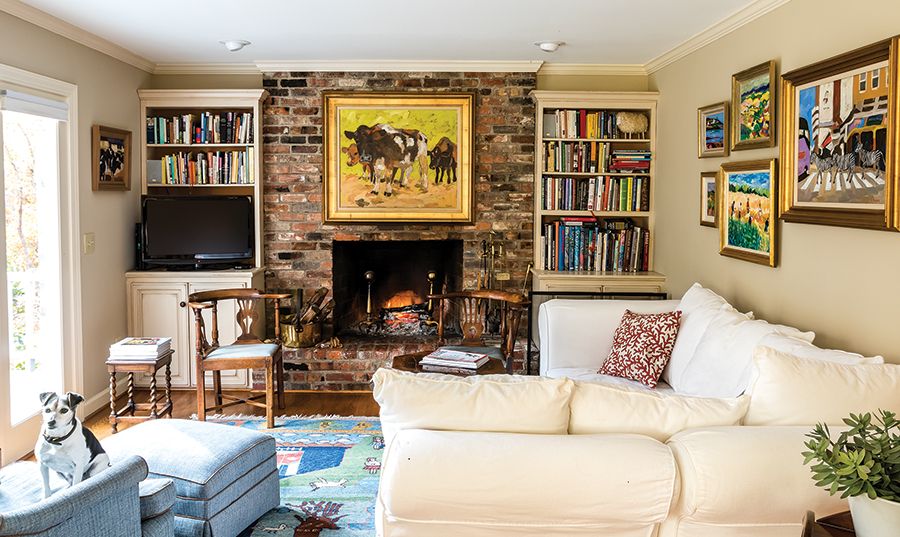On a cold winter’s night, wrap your hands around a bowl and you will begin to understand why these hearty one-pot meals have sustained people in the South for centuries
By Jane Lear
A stew, with its deep, soulful flavor and intoxicating aroma, is a stellar example of what can happen when household economy meets benign neglect. The main ingredient is often an inexpensive cut of meat, and it is perfectly comfortable on a back burner while you tend to other things. A stew offers comfort and sustenance, makes a great party dish since it’s at its best when prepared ahead, and ranges from homey (chicken and dumplings) to haute (boeuf bourguignon).
The term stew, by the way, generally refers to a mixture simmered until it makes its own thick sauce. The technique is an unhurried, transformative one that results in a spoon-friendly meal that is far more than the sum of its parts.
Beyond that, though, things get murky. It’s difficult to separate stews from bogs, burgoos, chowders, gumbos, hashes, muddles, mulls and purloos, and frankly, I don’t want to even try. What distinguishes them all in my book is that they are thoughtful, unpretentious and highly adaptable to seasonal ingredients or the contents of your larder. And given our increased appetite for global flavors, the Persian chicken stew called fesenjan (with walnuts and pomegranate seeds), a Mexican posole (pork, hominy, and chiles), a Moroccan tagine (lamb, prunes and apricots), or a Brazilian feijoada (black beans, bacon and chorizo) are well within the reach of any home cook with access to a good supermarket.
One of the most famous Southern contributions to the genre is Brunswick stew. The standard line is that it originated in Brunswick County, Virginia, on a hunting trip in 1828, when Dr. Creed Haskins’s black camp cook, Jimmy Matthews, made a squirrel stew bolstered with onions, stale bread and seasonings.
This provenance is hotly debated among aficionados in Brunswick County, Georgia, and Brunswick County, North Carolina. And let’s face it, it seems reasonable to presume that Native Americans in the region were concocting stews of wild game long before anyone else arrived on the scene. “In that sense,” wrote John Egerton in his masterful Southern Food: At Home, on the Road, in History, “there was Brunswick stew before there was a Brunswick.”
These days, the squirrel in Brunswick stew has been displaced by chicken or other domesticated meats, and additions include a highly peppered melange of vegetables such as onions, potatoes, tomatoes, butter beans and corn. I tend to prefer it with rabbit or chicken, and even though the meat is traditionally shredded into long strands, keeping it in bite-size chunks makes a nice contrast with the tender vegetables.
There are many other renowned stews to be found in the South, including the burgoo of Kentucky (similar to Brunswick, it’s unique in its use of mutton or lamb); the terrapin stew of Maryland and the Eastern Shore of Virginia; oyster stew, which you’ll find all along the Atlantic and Gulf coasts; and Pine Bark Stew, which is said to have originated along the Pee Dee River near Florence, South Carolina, in the 1700s. The true origin of the name is lost in the mists of time — there are as many hypotheses as there are recipes — but the dark brown stew incorporates freshwater fish such as bass, trout or bream into a flavorful slurry of bacon, potatoes, onions, tomatoes (sometimes in the form of canned soup and/or catsup) and often curry powder.
And then there is the Frogmore stew of South Carolina and Georgia. Named after an old sea island settlement and sometimes called Beaufort stew or a seafood or Lowcountry boil, this crowd-pleasing jumble of shrimp, spicy smoked link sausage, corn on the cob, and often crab and potatoes is at home anywhere on the southeast Atlantic coast. Frogmore stew is eaten differently than other stews: After the ingredients are boiled, they’re drained before being heaped on a large platter and typically served outside on newspaper-covered tables, with an abundant supply of beer and wine. In other words, what is not to love?
A favorite stew of mine is one that does not have a Southern provenance, but it sure is good, and can be easily cobbled together for a weeknight supper or casual evening with friends. The star of the show is escarole, a type of endive that at first glance looks much like a loose head of lettuce. Although the leaves turn a bit drab in color when cooked, don’t let that deter you. They also become supple and succulent, and their pleasant bitterness plays beautifully with two humble, often unsung ingredients: white beans and Italian sausage. This stew is a happy reminder that the word thrift is often a synonym for delicious. And if you’ve been wanting to incorporate more beans and greens into your diet, it’s a great place to start.
Escarole, White Bean and Sausage Stew
Serves 4 to 6 (the recipe can easily be doubled)
Like so much of my culinary repertoire, this stew hearkens back to my years at Gourmet magazine, where it was a staff favorite. The recipe was originally from American Brasserie, a cookbook by Chicago chefs Rick Tramonto and Gale Gand, and the only embellishments you need are a loaf of crusty bread and, for after, a crunchy green salad. If I can’t find escarole for some reason, I stir in leftover cooked kale, collards or other pot greens. And although diced plum tomatoes add freshness, color and a hit of acidity, if you can’t find good ones, then leave them out. If you’re fortunate enough to have leftovers, a spoonful or two makes a good topping for crostini.
1 teaspoon extra-virgin olive oil, plus more for drizzling over finished stew
1 pound bulk Italian sausage (sweet and/or hot), broken into bite-size pieces
About 5 large garlic cloves, minced
1/2 teaspoon red pepper flakes, or to taste
1 head escarole, washed, trimmed, and cut into 2-inch pieces
3 cups cooked or canned white beans such as great northern or navy (drained and rinsed if canned)
3 cups chicken broth
1/2 stick unsalted butter, cut into a few pieces
1/2 cup finely grated Parmigiano-Reggiano, plus more for sprinkling over finished stew
2 plum tomatoes, diced
2 tablespoons chopped fresh flat-leaf parsley
Coarse salt and freshly ground fresh pepper
Heat the oil in a deep large skillet or other heavy wide pot over moderately high heat until hot. Brown the sausage, stirring occasionally, for about 10 minutes. Add the garlic and red pepper flakes, then cook, stirring, just until garlic is softened, a minute or so. Add the escarole and cook, turning with tongs, until wilted. (You can add the escarole in batches if necessary, depending on the size and depth of your pot.)
Add the beans and cook, stirring, 1 minute. Add the broth and bring to a gentle boil. (You can make the stew ahead up to this point. Let it cool completely, uncovered, before refrigerating, covered. Then reheat before continuing.)
Stir in the butter, tomatoes, and about half the parsley, then cook, stirring, until the butter is melted and the stew is hot. Season with salt and pepper. Ladle the stew into warmed bowls and sprinkle with remaining parsley. Serve with olive oil and Parmesan. PS
The former senior articles editor at Gourmet magazine, food writer Jane Lear has been based in New York for 30-odd years. There are some relatives in Georgia, North Carolina, and Virginia who believe she is still going through a phase after college.




















